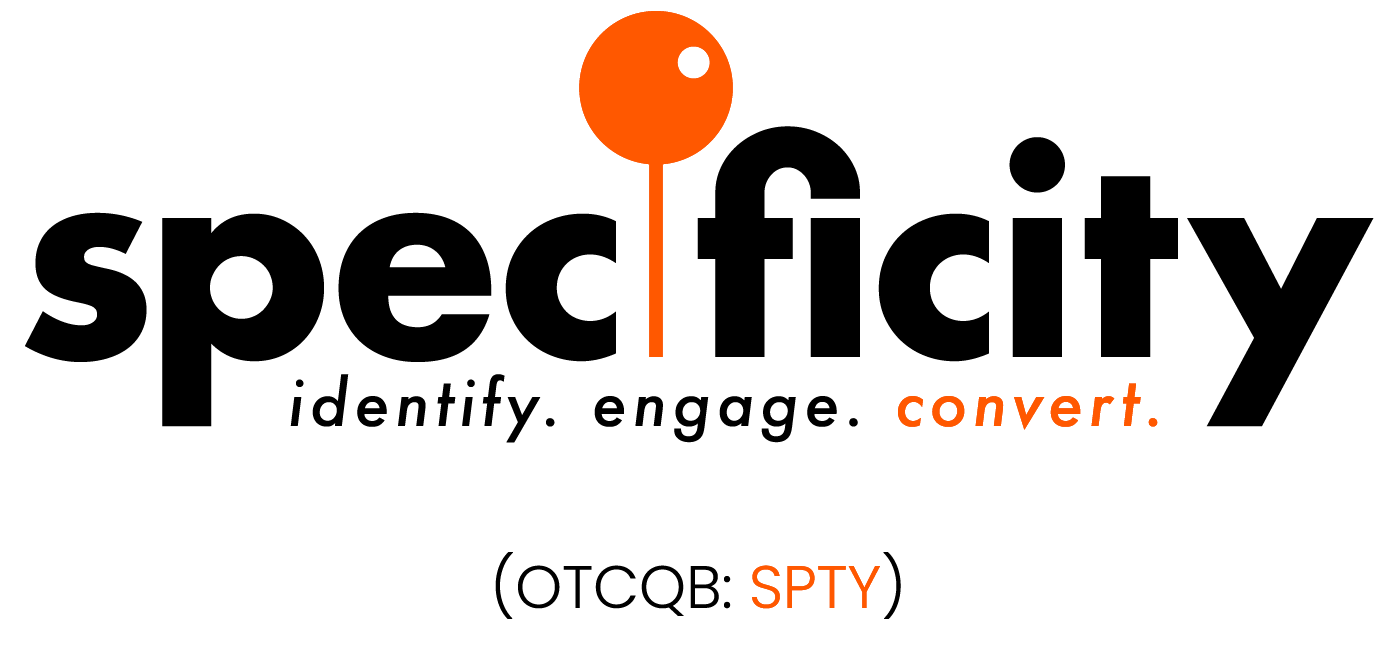With Absolute Specificity #1 – Jeff Shirley
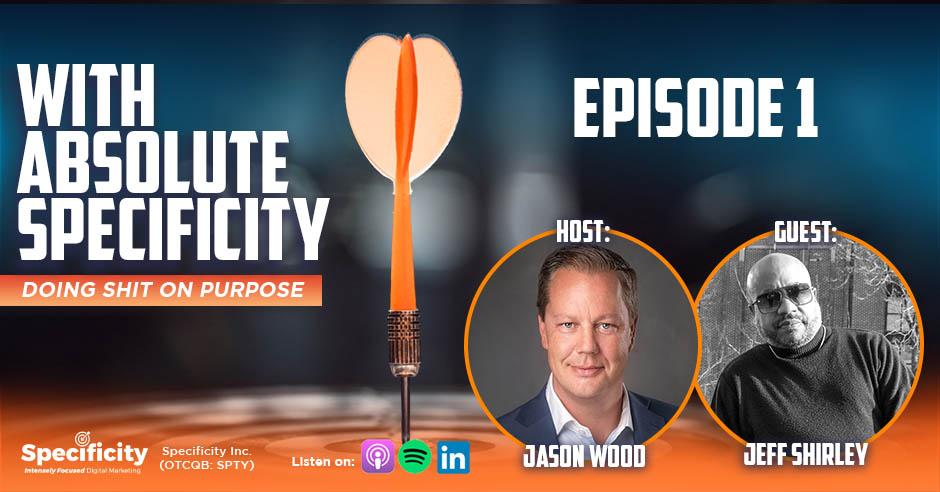
There is an art and science to brand marketing. It’s not just about choosing fonts and colors. Everything has a reason to it. And a lot of it is tied to the concept of specificity. Jeff Shirley knows this stuff from spending more than a decade as a marketer and brand strategist in companies like Kraft, Coca-Cola and Georgia Pacific. Now, Jeff is a Managing Partner at Brand Positioning Doctors a brand strategy firm that works with some of the top agencies in the country, dishing out some really innovative stuff in the branding and marketing space. You’re going to take away more than just a couple of a-ha moments from this conversation as Brand Positioning Doctors really delivers something very unique in the branding space. And Jeff articulates it very well in this conversation. Tune in and find out what that secret sauce is!
—
Watch the episode here
Listen to the podcast here
With Absolute Specificity #1 – Jeff Shirley
This is the show all about specificity and doing shit on purpose. In this episode, I’ve got a killer guest for you. This is Jeff Shirley, one of the Principals at Brand Positioning Doctors. If you don’t know, you should know. These guys do some innovative stuff in the branding space and marketing space at large. Jeff, welcome aboard. I want to start off by telling everybody some of your creds. You are a guy that started out in marketing at Kraft Foods, that little tiny multibillion-dollar company, ended up with Coca-Cola first head, went out on his own, kicking ass taking names sign of big clients and dominating the branding space. Jeff, welcome to the show.
Thank you. I have been looking forward to it. Let’s rock and roll.
I’m going to start out by disclosing a couple of things here. It’s not very often we get to do this. At specificity, we’re geek marketers. We do that kind of shit, but we’ve had the opportunity to partner with Brand Positioning Doctors, and they brought a lot of clients to the table for us not only we’re appreciative of that, nor do we value that relationship, but what a hell of a ride. What a learning experience it’s been. Not just in terms of the core competency and the marketing you guys do.
We’re going to do a deep dive into that, but also your business processes. You guys are fucking buttoned up at Brand Positioning Doctors. I always feel humbled. The minute you think your pants are getting big, all I’d have to do is hop on a call with you, LT and DC and some Fortune 500 companies. I sit there go, “What they said?” Talk to us about brand positioning doctors bed share with the audience what it is you guys do and the uniqueness of brand positioning doctors in the branding space.
There are three of us, me, LT and DC, Larry Taman and Darryl Cobbin. The core of what we do is we help brands with their positioning. In other words, what do they mean in the marketplace? What is their brand all about? We use a process that we learned when DC and LT when were at Coke from a gentleman named Jim Emery. He had an intellectual property where he understands how the mind thinks about brands. The mind thinks about brands in four different ways, as a user, in the category you use, as an analogy to the category or benefit.
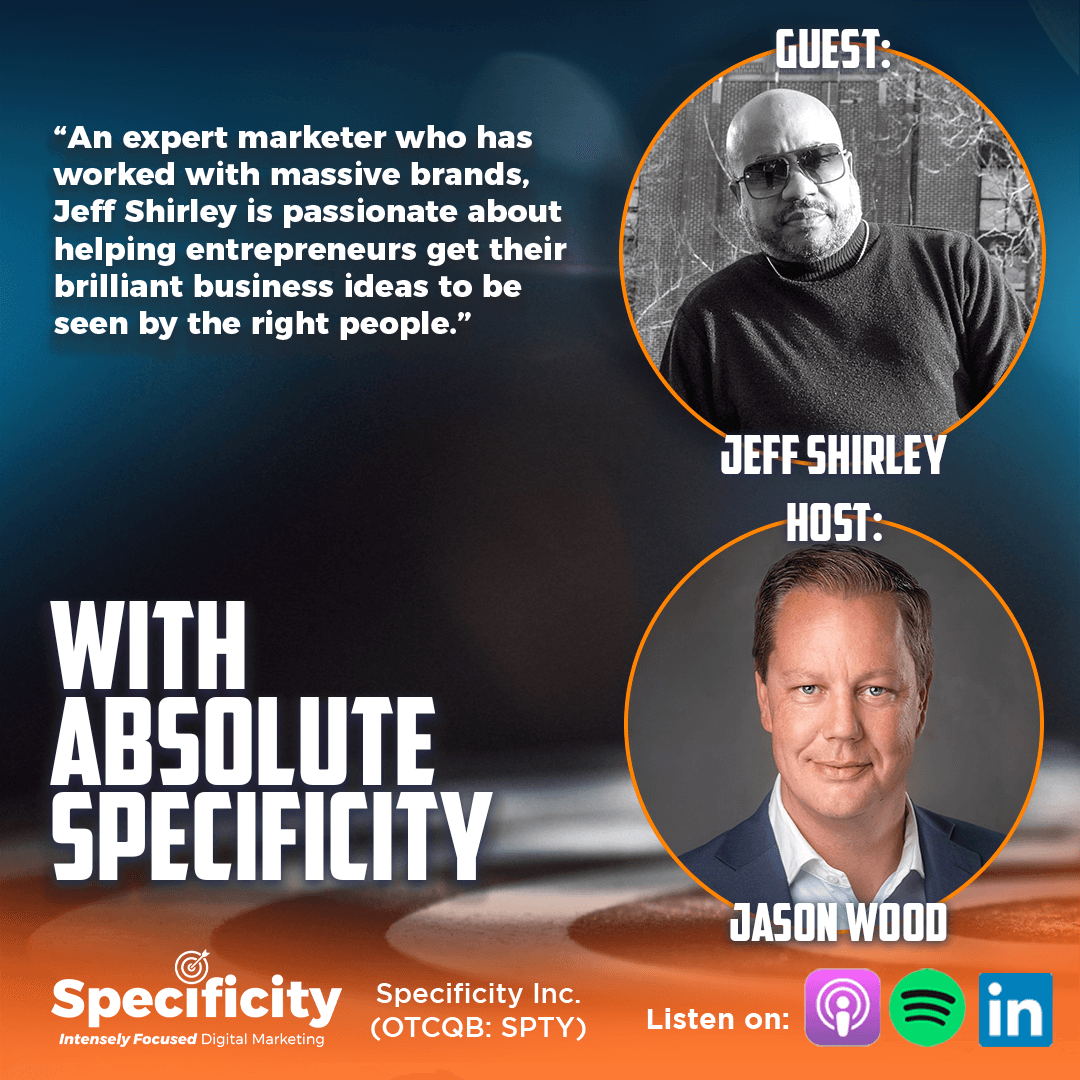
What we’re able to do is take that intellectual property and help brands communicate along those four axes. When you do, you’re better able to communicate with your consumer emotionally. We’ve done it with large clients like Walgreens and Coke brands, Amazon, Beats, etc. We’ve done smaller clients. There’s a client that was a startup we dealt with called GoPro. Six years later, they’ve gotten over $3.5 billion in funding.
It doesn’t matter the size of the business or what the business does. We’ve also worked with entertainers like Kevin Hart and LL Cool J. Anything that needs positioning in the marketplace so you can be remembered, we help clients do that. That’s what we hire for one of the great things about our business is 100% of our business comes from referrals. We typically get a call from someone who either used us at another company or recommended us because they were looking to do brand positioning. That’s what we do.
The phrase branding got a stigma nowadays because there are many agencies out there that don’t look at branding from a psychological perspective. They look at it from an aesthetic consistency message. That real top-level shit doesn’t work anymore because, due to the high adoption rates and social media, your brand is no longer what you tell the market it is. It’s what they tell each other. By taking the approach you guys do, what you’re doing is feeding that position into the consumer audience directly. They’re telling each other what that brand is about, which is exactly what you design from your conference to begin with.
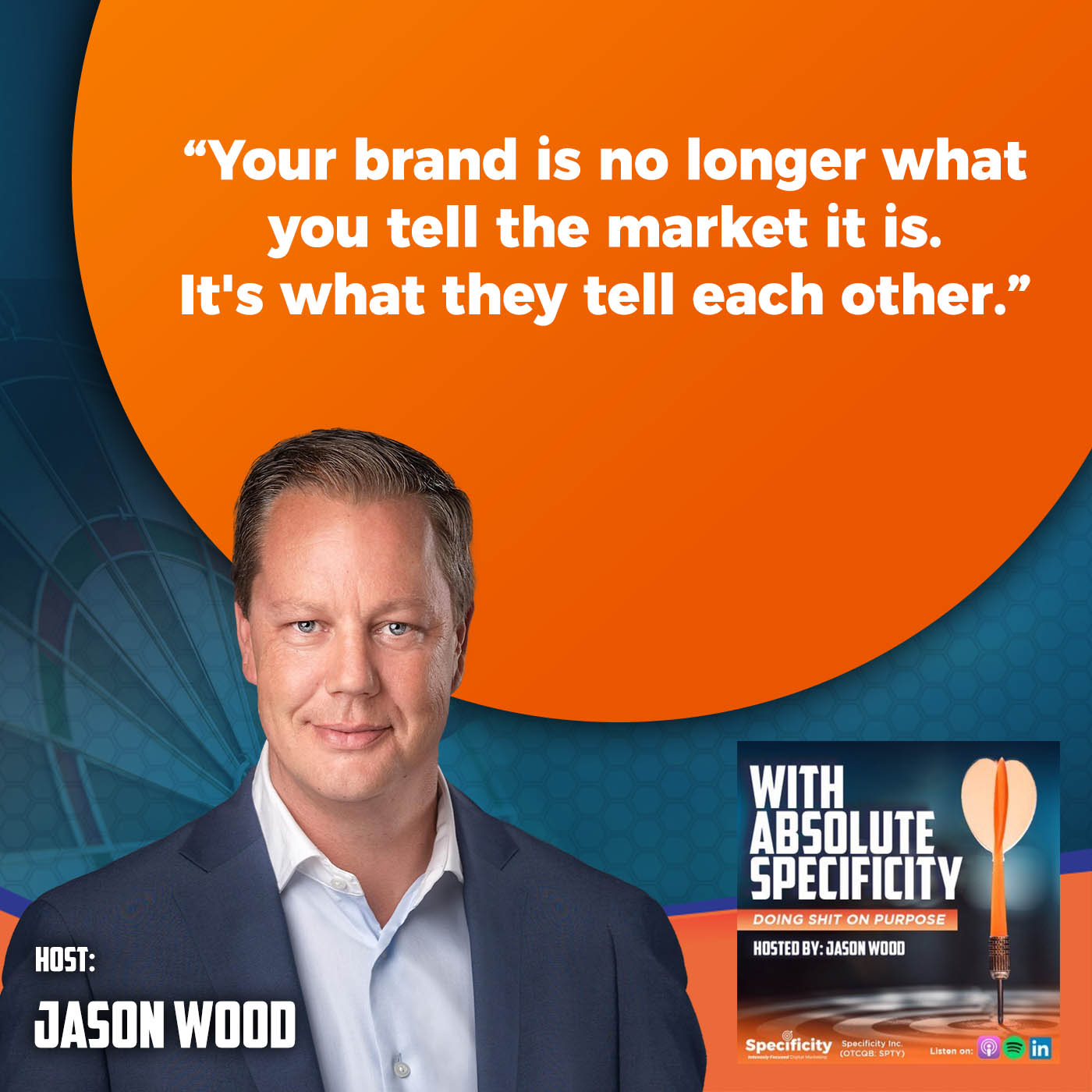
Building on what you said, like what people think is logos and all this sort of thing. Marketing is the only C-Suite position that anybody thinks they can do. I’ve talked to people and said, “What did you do before marketers?” “I was head of HR, and they put me in the CMO role.” “Did you take the class to understand the art and science of marketing?” A lot of people don’t understand that there’s an art and science to marketing.
[bctt tweet=”There is an art and science to marketing.” via=”no”]
The three of us learned that because we grew up in brand marketing. We understand that. If you get thrust into a senior-level role, you got to do some homework to understand, “How do I connect with consumers?” It’s just not saying, “I like red, so let’s go with red.” There’s a reason, methodology, and science behind connecting with consumers from a marketing standpoint.
You guys are successful at this. I’ve been on a call or two where that’s been the case. Our audience is largely marketing people that hopefully come from HR and true marketers. One of the helpful things they could garner from you guys and your approach, which I know I certainly have, and I’d love for you to share some examples, what do you do to overcome that challenge of somebody that thinks they’re a marketer, but they’re not or they know they’re not, but they’ve been thrust into a decision-making position about marketing? How do you guys penetrate that because that’s a tall order right there?
It’s hard to penetrate. We’ve evolved to the presentation that we do now. Let me explain. What we do is we start off our presentation with a set of words, and we ask them what brand is associated with those words. We give them twelve examples. What happens is most people get 12 out of 12 or 11 out of 12. The question is, “Why were you able to associate like a good neighbor state farm? We know what happens, but why?”
That’s when we explain the four ways the mind thinks about brands. That helped us help people understand, “There is a science behind this. Now they’re ready to listen to how do we bring that science out and what they’re communicating into that brand.” Changing that up and doing that has been very helpful, but it’s still difficult when you have people who don’t understand that there’s an art and science. Sometimes they don’t become a client.
There’s another aspect to this that I see. I’m going to add this caveat before we get into this. We have our core competency and technology or whatever we do. I firmly believe there is no such thing as a silver bullet marketing because there’s not one person you’re looking to convert, so there’s not one human being. All of it has got to work collaboratively and uniformly to create that marketing paradigm conducive to the ultimate goal, revenue.
This is one of the downsides I have seen in digital marketing as a whole, not specificity, but all of it is that I think digital marketing is conditioned by chief marketing officers and business owners to look at marketing as a short-term input-output game. While that’s an important part of the game and where we live at its best, it’s an important piece. I think it’s conditioned marketers to look at marketing strategies. If they don’t see or can’t put their hands on that immediate return or at least intermediate return, they don’t see the value in it that they should wear in what you’re doing. It is a long-term play, but it’s a huge, powerful play if it’s done right. Speak to that. What do you see as the cannibalization of the long-term play due to the short-term sightedness of marketers now?
Let me back up a little bit. I was in brand marketing and promotions. I went into the digital marketing and the eCommerce team. You are talking right when the ground was starting. I dated myself. I always become a student of the venture about to take on. If I went into real estate, I don’t understand everything about real estate and how to succeed in it, for example. When I got there, the first book I read was Permission Marketing by Seth Godin. It’s the most impacted that I read of all the books I read.
He said a few things in there. 1) As we move toward digital marketing, the importance of one-to-one marketing, and he said, “You got to treat different people differently. What digital marketing allows you to do is to do that very thing.” That’s why when I heard about specificity, I fell in love with you guys. I knew exactly what you could do when Jerry explained it to me. It was like, “Here it is.” Getting clients to understand the lifetime value of a consumer is key if you can get them to understand that.
[bctt tweet=”It is very important to get your clients to understand the lifetime value of a customer.” via=”no”]
Let me explain. When I went into the digital Kraft, we had to go to the brand marketing team and say, “Do you want to start investing in this?” There was a study done across 35 brands across the Kraft Foods portfolio. They found out that the heaviest users of any brand, on average, bought the brand 4 out of 10 times in 1 year.
Your heaviest users were cheating on you. these are intelligent folks from Harvard, Northwestern, etc. They said, “Why do I need to talk to my heavy users?” I’m like, “Did you see the study?” We all were sitting in the same room. If your heaviest users use 4 out of 10 times, you can grow your volume very quickly by getting them to use 1, 2 or more times. We’re trying to find someone new to get into the category. It’s less expensive and more impactful.
I was shocked that getting people to understand a consumer’s lifetime value is when you can move into a growing share of requirements versus trying to find someone who loves a new product and got to find somebody new. If you’ve been around like Kraft cheese for decades, and your heaviest user uses you 4 out of 10 times, let me give us the 5th or 6th time. If I can get them all to do it two more times, my volume doubles. It grows by 50%. You can get 2 users by 2 more times over the course of 1 year.
That’s frequency over persuasion. It’s much easier. At Brand Positioning Doctors, when you’re approaching a prospective client and you know their marketing mix, you know what they’re doing, and you’re assessing that I know that’s where you guys started, what’s taking place? What’s going on? In other words, what kind of shitshow am I walking into because we don’t do that as marketers? “What kind of clusterfuck am I getting right after to fix here?” You’re walking into that dynamic.
You get through that assessment phase and you put together the strategy phase? What are you saying to prospects to fundamentally change their perspective on where to put their ad spend in terms of the long-term play? I slit my own throat here. I think there’s too much emphasis on here now. It’s like investing in stocks. If you’re buying a stock because you want it to go up 10% tomorrow and sell it, you’re not playing the right game. I feel like for us. It’s specificity. The best client results we’ve ever driven are when we’re partnered with a firm like yours or with a marketer that shares your mindset you’ve got both going on. How are you convincing these people to take their eyes off the short-term, at least in part, and pay attention to their brands’ overall health and longevity?
One of the things we talk to clients about is this notion of when you create your brand positioning, that in and of itself as long-term. You can change the tactics 100, but you notice Nike hadn’t changed, Just Do It since 1987. Their brand positioning becomes very clear through that tagline. 1st, we say that’s long-term. The 2nd thing that is counterintuitive we end all our workshops with this and we say, “If you don’t remember anything, remember this one thing, you must narrow your focus to broaden your appeal.”
“What do you mean?” Let’s go back to Nike. In all of their advertisement, you see elite athletes. I can’t dunk a basketball. I can’t hit 100-mile an hour fastball. I can do none of that. That’s what you see in a Nike ad, but I still buy Nike because that’s the user that they’re focused on. You draw in your target market by narrowing your focus. We want to get them to understand that and then if you do that long term, you can’t do that for a quarter and say, “Look.”
You do it long-term. We know Nike. The example we use with Nike is the mall walkers right up North senior citizens. When it’s snowing outside, they open the malls early so they can walk around the mall. Do not even want them to wear Nikes? Yes, but you didn’t go to see him in an ad. You’re not going to see that, but they draw in the mall walkers. You have to do that over an extended period of time to have the impact on creating and growing your brand and on getting it to the stage of what we call, “We want to get it to be iconic.”
That’s like that aspiration and respect element. You can use an elite athlete and get away with your Nike because athletes aren’t elite. They aspire to be elite athletes. You’re going to capture that audience. People that get up and they’re 70 years old go walk the mall. They respect elite athletes and therefore want to emulate that. You’re hitting all tiers without it. Some people would think that would be almost alienating because you’re focused on an elite athlete, but there’s nobody is looking at an elite athlete goes. I have no respect for that whatsoever.
We know it’s intuitive. That’s why we drive home every time. When another example uses Wheaties. Let’s say you’re a swimmer. You come in .001 seconds behind the first place. You didn’t go to end up on the Wheaties box. It’s the breakfast of champions. Only champions show up and are not in second place.
Silver medals need not apply.
It’s only the gold medalist who won the world championship, etc. Narrow your focus to broaden your appeal and do that over a long period of time, and you will build your brand and make your brand iconic.
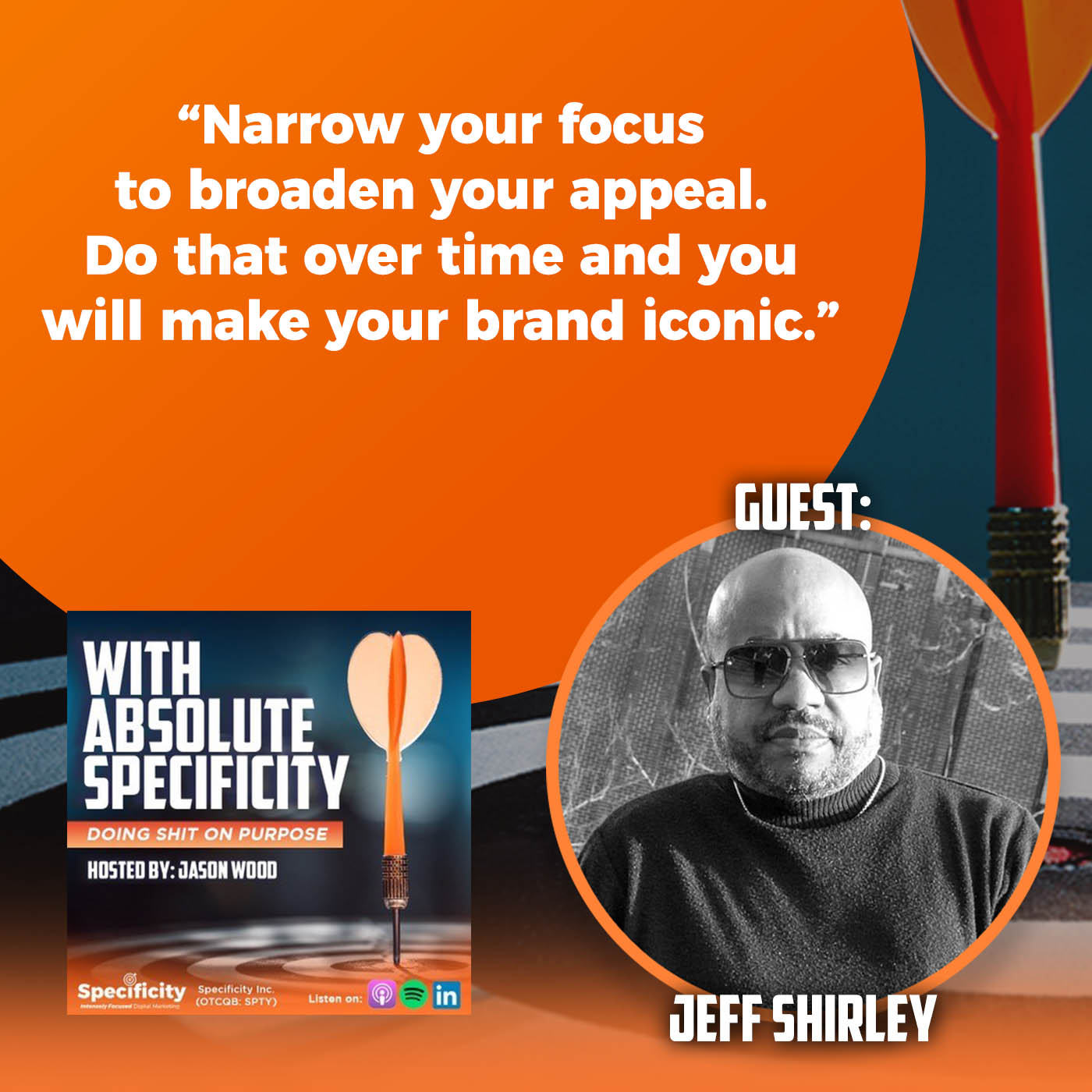
To that point, I’ll tell you a funny story. It’s how I grew up. No joke, my mom was hard. I qualified for the conference my freshman year, which was a big deal. I was all proud of myself and I got second place. I’m sitting in the backseat in the meet. I’m looking at my medal. My dad drives and my mom turns around and goes, “I’m proud of you, but you didn’t know what second place is, right?” I said, “What?” She goes, “The first loser. Let’s do better next year.” You are talking about motivating.
[bctt tweet=”You know what second place is? It’s the first loser.” via=”no”]
Let’s switch gears for a minute in terms of communication channels. We’ve got all the digital ones, social media, Google, YouTube, and display and all that stuff, then we’ve got traditional communication channels that are a little less quantifiable because a broader sword at to your point, effective greater appeal. Where do you see the majority of success for your clients in terms of communication channels or is it a split next? What do you see in work?
By far, digital. Here’s a story. I remember when we were interested in buying a brand. When we were looking at it, what we realized is when we do our marketing campaign, we could spend it in various different ways, but where we landed was for the first year, we weren’t going to use anything but specificity because she’s been on the shelf for 37 years, but no one knew of the brand. We knew that you could find users in that category in the stores she was in and let them know what was there so we could create more trials. We know we could 10x, 15x or 20x our business, starting with specificity.
I don’t know if we’d ever come off of that because I don’t know of another vehicle that can do that because you are only going to talk to people in her category. No wasted communication. It didn’t make sense. We batted around, “Then wouldn’t we want to do this or that?” I’m like, “Help it make sense to me. Tell me how that makes more sense then only talking to people in her category.” We couldn’t do it.
Personally, if you can have a channel, and one of our clients used to say, “That doesn’t make walking around.” You’ve got one channel. Where they’re only going to talk to the people who are interested in buying your shit or you’re going to pull it into a channel with some people going to see it and give less than a damn about it, but through that, you’re going to find some people that are raining on Chicago to get one car wet because it’s broad. Which one would be more effective? Walking around since says that the vehicle where I’m talking to the people who want to buy my product, over time with frequency, I will get more of an impact and I will grow my brand, revenue, etc. It’s not even a contest in my eyes.
What companies and marketers get caught up in is we’re such a monkey-see-monkey-do society. At large, marketing is particularly bad. If something goes trendy, and everybody’s using it, even though the ROI sucks on it to this exact point, what I think happens a lot is you see companies like Clinique, Nike, Microsoft, and Apple deploy these multi-tens of billions of dollars branding campaigns. What I think people fail to realize is that these companies are successful and revenue rich, that they have a choice to make either put the money into these giants at large branding strategies or campaigns, not concerned about ROI, but at least they are going to get the branding benefit from it or pay it in Federal taxes.
[bctt tweet=”We are such a “monkey see, monkey do” society. Marketing is particularly bad. Something goes trendy and everybody’s using it even though the ROI on it sucks.” via=”no”]
I think companies push a lot of money off their books and shotgun this marketing because it’s better than giving it to Uncle Sam. If you look at what they’re tracking and at the analytical reports they share at tech conferences, it’s digital, targeted audience, segmentation and data. Nike is looking at various consumer segments to deploy hyper-relevant ads to the mall Walker, to that elite athlete, to the chubby middle-aged guy like me that used to be an athlete, but I still see myself that way. They know these ads are going to play to me.
People don’t realize that these Fortune 1000 companies, at the end of every year, while they allocate money that next year that they know they need to push off in their books or pay taxes and a shotgun branding campaign. While it might not be strategic, it’s a hell of a lot more used to the company than paying in taxes. Other companies see him do that go, “We should do that too.” They’re working with a $ 120,000-a-year ad budget.
I’ve never thought of it like that, but that’s a great point. You layer on the fact, but we talked then you get that consumer, then what’s the lifetime value of that consumer? If it took me $10 to get a consumer for my $2 product, but they buy for the rest of their life, that was a good $10 investment.
The life value of customer loyalty is unquantifiable sometimes. It matters that much. Where are you guys? What are you working on? What’s hot with BPD over there?
We’ve worked with a lot of large corporations. We have this expertise of being able to identify a brand that needs marketing and knowing we can take it to significant heights. What we’re working on now is working with smaller businesses that don’t have that area of expertise because, as you know, most entrepreneurs, if they make pies, they know how to make pies, but they don’t know how to market and grow their business.
The E Myth book talks about processes. We’re looking for businesses where the gap in their growth is marketing. What we’ll do is we’ll help position them with marketing and then use our vast resources, you all being one of them, to help grow them in the marketplace. The meeting we had was an example of that. You are $500,000 now, but I promise you business is about to blow up, in large part because you’ve got to be able to find consumers, but also, we’re also going to help them with positioning and help him grow his business build his brand.
Many people in our space chap get caught up in their own revenue model that they don’t have the ability or the willingness to take a step back and say, “You’re not ready for me yet. You’re not there yet. You’ve got to come over here into these arenas.” I didn’t want to say this to you on that call. You’ve got to build a better brand and a more palatable brand. I know that you guys, and then you have to take that brand, you have to build an online presence with that brand that we can send traffic to because bison traffic, even qualified traffic to what’s there, is going to struggle. That’s a waste of freaking money.
As you know, the smaller the business, the more recent the startup, and the more precious that capital is in terms of marketing. Many digital marketing, specifically, gets caught up in my immediate revenue, retainer, whatever model I have, by business, that I’m going to have this guy spend money because I know I can drive the result. If I take a deep breath, advocate and share with them what you’re already telling them anyway, I’m sure that you need to build, but you can even lay those bricks for the foundation then you buy the steroids, then you go out and target audiences, that to your point, you could take a $500,000 company to $50 million. Without those bricks, I can’t do anything.
Especially small businesses, you got to get them to need to slow down to speed up, “Let’s take care of this so we can move forward.” We’re working together. Since we started our partnership, it’s added a layer of confidence to the kind of success we know we can drive. If we thought we could get to this success in X with you guys, now we think we can get there and half the time, for example, because you’re able to find those consumers. Helping small businesses grow is a big thing and right now, we still have our major clients, but that’s what we want to do.
I think that opportunity is going to be phenomenal for both the client and all of us involved. We always appreciate your kind words appreciate bringing us and that is humbling. Many people who are good in your advice space ignore the other spaces because they over-prioritize out of ego or out of knowledge. That hurts and harms the client so often. Not bring the other facets of marketing to the table is not beneficial to the client, and it creates a short-term client anyway. You can’t get to where you want to go. We talk to people all the time, we love to race. Everybody thinks the first step in racing is starting the car. You got to pick the tires first, then you got to build the car.
It’s a functional necessity. I love to go 1,000 miles an hour. I don’t want to do it with wheels underneath me that weren’t thought through well and come off in the middle of the race. That’s dangerous. We appreciate a partner like you because you guys are thoughtful in your approach. Let me ask you this, “What do you see in 2023? What’s on your Horizon?” We do, too and I love it. We have some synergy there. I love big clients and all of that, that’s great, managing giant campaigns, but I have a passion for these companies with entrepreneurs and solopreneurs who have an idea or something they made.
It’s dope, and they can’t figure out how to get it to the masses and to the right people. I love that at that paradigm. I’m with you. I’m getting a taste of this thing yet, but you could read by the way he talks about it, then that woman that’s there helping you is clearly tasting it like this thing’s going to be private. What do you guys focus on for 2023? What trends do you think are coming down the pipe here with that economy, inflation and all these things rearing their ugly head? What do you say?
We haven’t even talked to you about it yet. This is a true startup. We had zero sales. This is a person we’ve worked with, DC had known him for many years. Fortunately, he has a product that we can look at and say, “We think that’s going to be big.” We had our first meeting. When we get down the road, you’re always our first call when it comes to executing marketing. That’s the biggest thing we’re excited about because it can go from zero to the moon very quickly once we get in the marketplace, and we’re doing it in the right steps. We’re going to start with defining the brand, then we’re going to develop the marketing plan to reach consumers, etc. We’re doing it methodically and how it should be done to your point, slow down the speed up. He’s entrusting us with that entire piece. We will be contacting you about that product
One of the things that I think marketers are guilty of as a profession is overlooking the business intelligence, the BI, that can come out of marketing that can help an entrepreneur or a business looking to get off that next plateau of being predictive in all areas operations, acquisition and hiring.The ability to be predictive, you can do that stemming from analytics that comes out of marketing. I think that goes undervalued a lot.
We had a client that we were working with, and they did this analysis. We were shocked to find out that her core audience loves amusement parks, not her. She wasn’t cotton candy and nothing like that. Her family went to amusement parks that had all these categories. Amusement parks were significantly higher than any other event a family would do. Who would have thought that? You got to dive into the end that you don’t know what you don’t know until you know it. I love diving into analytics and finding those little things then you can start to accelerate your impact in the marketplace.
We see it all the time because we’re geeks. That’s where we focus a lot of our time. We talk to clients in certain spaces. We’ve had the first meeting. I had a call like this with a window company. It’s high in windows. We’ve got a few clients in that space and various markets. I said, “Do you know what the number one driver of purchase is in your space?” They send, “It’s homeownership.” “No. It’s the percentage of home equity. If you have 26% or higher home equity in your home, you are 71% more likely to buy a replacement for your house. When you drop below 25%, you’re 71% less likely to do the deal.”
It’s because a lot of consumers use the equity in their home to finance the project and either pay it out over time or pay it off when it’s done, but they use that capital in their home and nobody wants to fall below 20% because they don’t want to pay private mortgage insurance. Home equity is the number one driver. I won’t spend $0.5 on a client’s money marketing to a household of $5 million home if they have no 18% or 20% equity in their house because I know there’s much less likely. That’s a waste of digital spin. It’s shipped by that. You can share it with clients and we didn’t know that.
That’s a huge, significant bonus that you’ve brought to our clients. Time after time again, you get the, “Oh shit,” moment when they see the data. We had one client when if you’d asked them, they would’ve thought, “The main people participating would be under 40. We found out it was over 60.”
You got to be careful because statistics never lie, but liars always use statistics. Thanks a lot for coming on. We appreciate it. We’ll continue this partnership. I can’t tell you how much we value you guys. I’m going to have the other partners, DC and LT, on at some point, but I wanted to start with the better-looking of the three.
Thank you.
We appreciate you, as always. We’ll be in the trenches with you soon.
Important Links
About Jeff Shirley
 Jeff Shirley began his career at Kraft Foods, where he spent 11 years in Foodservice Marketing, Brand Marketing, Promotions, and eMarketing. He joined Coca-Cola as the Senior Director of eMarketing for North America Brands in 2001 and joined Georgia Pacific in Sept 2002 as the Director of eMarketing. Jeff is currently a Managing Partner at Brand Positioning Doctors who works with some of the top agencies in the country.
Jeff Shirley began his career at Kraft Foods, where he spent 11 years in Foodservice Marketing, Brand Marketing, Promotions, and eMarketing. He joined Coca-Cola as the Senior Director of eMarketing for North America Brands in 2001 and joined Georgia Pacific in Sept 2002 as the Director of eMarketing. Jeff is currently a Managing Partner at Brand Positioning Doctors who works with some of the top agencies in the country.
